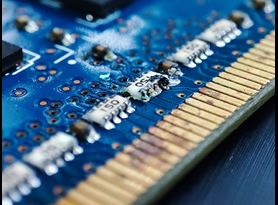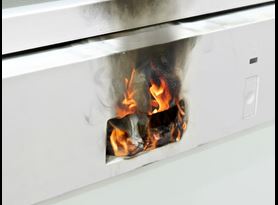Determine whether your device components can be successfully soldered during the assembly process with industry-leading solderability testing from Element.
Solderability testing is an important step in determining whether your electronic device can be efficiently manufactured. This type of testing determines the solderability of device package terminations that are intended to be joined to another surface using lead- (Pb-) containing or Pb-free solder. The process involves destructive tests that indicate whether the packaging materials and processes used during manufacturing produce a component that can be successfully soldered in the next level of assembly.
There are two methods of solderability testing. Method one is known as “dip and look” (D&L) which is for leaded and leadless terminations. This method includes pre-conditioning, if applicable, the application of flux, and the immersion of the terminations into molten solder. Method 2 is a surface mount process simulation test that applies solder in a way consistent with the intended final assembly of the product.
Wetting balance test
Solderable surfaces differ in the speed and strength of their adhesion. The wetting balance refers to the time required for the solder to wet the component termination or pad, which is an important factor in solderability. The wettability of a surface is influenced by the type of metal or contaminants present. It is often used in testing for counterfeit parts, as resurfaced leads will react differently than new parts.
The wetting balance test can be performed on leaded or leadless components. Leaded components use a molten solder bath and for leadless parts, a globule of solder is used instead. Many specifications require some kind of preconditioning, such as steam age, prior to testing to simulate shelf life and show solderability and wettability after long periods of storage.
Some of the specifications and methods for wetting balance testing are:
- ANSI J-STD-002
- ANSI J-STD-003
- MIL-STD 883
- ISO 9455-16
- ISO 12224-3
- JIS Z 3198
Solderability testing standards & methods
We test to your specific requirements, but the standards and methods typically used for solderability testing are:
- IPC/ECA J-STD-001
- J-STD-002
- J-STD-003
- MIL-STD-202, Method 208
- MIL-STD 883, Method 2003.10
- IPC-TM-650, Method 2.4.12
Solderability test methods establish preconditioning and soldering options to assess the solderability of device package terminations. They provide procedures for “dip and look” (D&L) solderability testing of through hole, axial, and surface mount devices and a process simulation test for surface mount packages.
Why choose Element?
Element provides comprehensive electronic component testing for PCBs and related device components. Our experts have the experience, equipment, and facilities necessary to provide you with the best testing and certification services in the industry. Contact us today to speak with an expert about your specific needs.
Learn more

Printed Circuit Board (PCB) Failure Analysis
Understand and rectify the root causes of PCB failure with industry-leading PCB failure analysis from the testing experts at Element.

Printed Circuit Board Testing
Ensure your printed circuit boards and finished printed circuit assemblies are of the highest quality and compliant with relevant standards with comprehensive PCB testing from Element.

Consumer Electronics Testing & Certification
Element’s consumer electronics testing and certification services help your products meet EMC, Electrical Safety, and Radio national & global requirements.

Electrical Safety Testing and Certification
Discover how Element combines its range of electrical testing with EMC, radio, wireless and IoT compatibility services to get your products to market faster.

